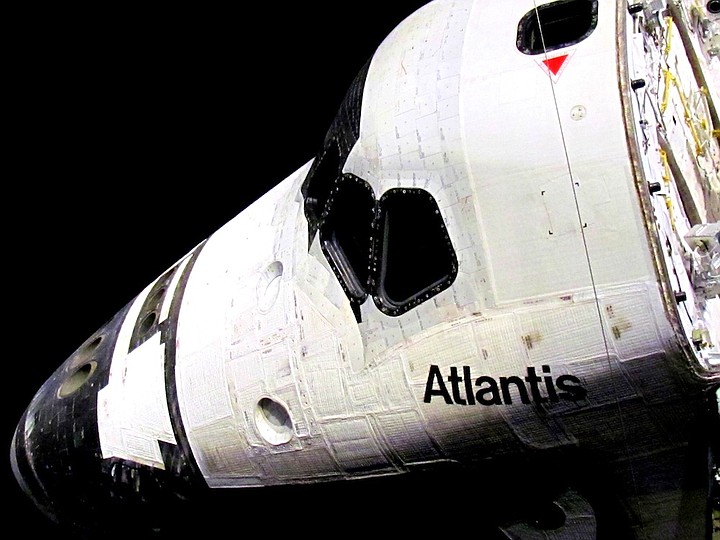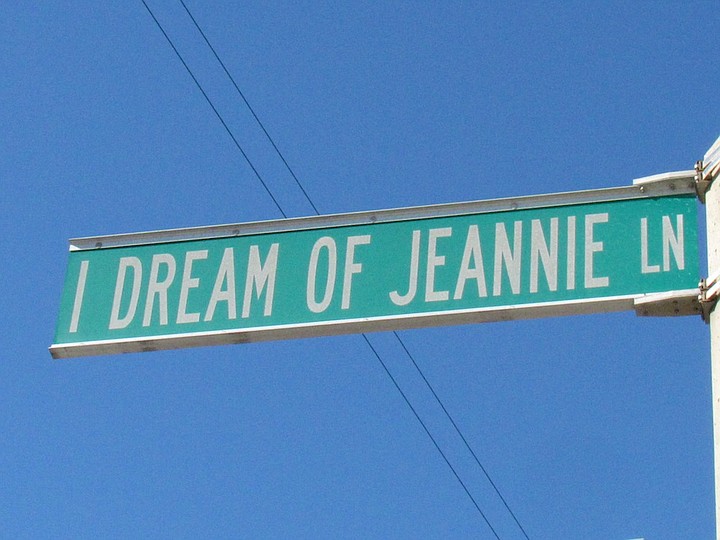 Facebook
Facebook
 X
X
 Instagram
Instagram
 TikTok
TikTok
 Youtube
Youtube

“Houston, all systems are GO. We are ready for takeoff! Final countdown. 4, 3, 2, 1 Liftoff!”
America’s Space Coast with its telltale 321 area code extends for 75 miles along the Atlantic, south of Daytona, and encompasses both the Kennedy Space Center and the Cape Canaveral Air Force Station where NASA-launched manned (and unmanned) spaceflights have departed from 1961 with Project Mercury to the final days of the 30-year Space Shuttle Program that closed in 2011.
The tiny towns of Cocoa Beach and Satellite Beach had fewer than fifty residents prior to the formation of the Naval Air Station Banana River, now Patrick Air Force Base, and the Cape Canaveral Air Force Station. Their population boomed (1,000%) between the '50s and '60s as a result of the growing U.S. space program.
Even the fictional astronaut Captain Nelson lived in Cocoa Beach, along with his own private genie (Jeannie) he acquired while stranded on a deserted island after falling back to earth off course from a one-man space mission.
The Kennedy Space Center is a compound of exhibits including indoor and outdoor displays of rockets formerly used by NASA. Visitors can view towering rocket ships like the Atlas and Titan in Rocket Garden and sit in the claustrophobic Mercury, Gemini or Apollo capsules before venturing off to see – close up – one of the five space shuttles, the Atlantis. There are also bus tours that drive by the launch pad and the vehicle assembly building, the largest single-story building in the world.

Seeing Atlantis as a space-walking astronaut was undoubtedly exciting. What “did it” for me, though, was walking beneath the 363-foot-long Saturn V rocket hung in the Apollo/Saturn V exhibit. This, not Atlantis, was the awe of my childhood, eventually launching 27 astronauts out of orbit. It was this rocket – as long as a football field – that saw, and survived, the Apollo 1 and 13 disasters. The Saturn V was legend. I had seen it on TV, in space, and there it was, right above me. It doesn’t get much cooler than that.
The Space Center is family-friendly with tons of interactive displays, simulators and multimedia presentations. The Shuttle Launch Experience attraction is a life-like simulation of shuttle liftoff. I had recently ridden the Mission: Space attraction at Epcot, so I was prepared for the simulated G-force.
While visiting Space Coast, lunch with an astronaut and catch a launch, not all of which happen at dawn. Free two-day admission to the Astronaut Hall of Fame is also included in the Kennedy Space Center ticket price.
Fly into Daytona or Orlando, and rent a car. If you want to stay where the action is, try one of the original motels located along A1A, south of the Cocoa Beach Pier with its Mai Tai Tiki Bar perched at the very end. With a lush courtyard, the newly renovated Wakulla Suites – formerly space program personnel housing built back in the 1960s – has a tropical feel along with direct beach access.
For a bit of vintage Victorian, Florida-style, book a room at the Parrish Grove Inn located in Cocoa Village (inland, across the Intercoastal Waterway from the City of Cocoa Beach), providing easy access to the shops and restaurants in the revitalized historic district. Cafe Margaux, renown for its eclectic cuisine, is a must for self-avowed foodies.
OR, if you’ve got yourself a DoD ID, stay at the oceanfront Beach Cottages or Space Coast Inn on Patrick Air Force Base.
Space Coast hosts annual art, music, and food festivals, as well as the Pro AM Surf Festival over Labor Day weekend.

The manatee observation area on the east side of the Merritt Island National Wildlife Refuge is a great place to look for the lovable mammals, especially as the weather warms and they leave their winter homes at the hot springs upstream, migrating back towards the ocean. Roseate spoonbills and green sea turtles also habituate the Refuge.
And, of course, swing by the oceanfront Lori Wilson Park (with rare free parking) to snap a shot of you and yours in front of the famous “I Dream Of Jeannie” sign.


“Houston, all systems are GO. We are ready for takeoff! Final countdown. 4, 3, 2, 1 Liftoff!”
America’s Space Coast with its telltale 321 area code extends for 75 miles along the Atlantic, south of Daytona, and encompasses both the Kennedy Space Center and the Cape Canaveral Air Force Station where NASA-launched manned (and unmanned) spaceflights have departed from 1961 with Project Mercury to the final days of the 30-year Space Shuttle Program that closed in 2011.
The tiny towns of Cocoa Beach and Satellite Beach had fewer than fifty residents prior to the formation of the Naval Air Station Banana River, now Patrick Air Force Base, and the Cape Canaveral Air Force Station. Their population boomed (1,000%) between the '50s and '60s as a result of the growing U.S. space program.
Even the fictional astronaut Captain Nelson lived in Cocoa Beach, along with his own private genie (Jeannie) he acquired while stranded on a deserted island after falling back to earth off course from a one-man space mission.
The Kennedy Space Center is a compound of exhibits including indoor and outdoor displays of rockets formerly used by NASA. Visitors can view towering rocket ships like the Atlas and Titan in Rocket Garden and sit in the claustrophobic Mercury, Gemini or Apollo capsules before venturing off to see – close up – one of the five space shuttles, the Atlantis. There are also bus tours that drive by the launch pad and the vehicle assembly building, the largest single-story building in the world.

Seeing Atlantis as a space-walking astronaut was undoubtedly exciting. What “did it” for me, though, was walking beneath the 363-foot-long Saturn V rocket hung in the Apollo/Saturn V exhibit. This, not Atlantis, was the awe of my childhood, eventually launching 27 astronauts out of orbit. It was this rocket – as long as a football field – that saw, and survived, the Apollo 1 and 13 disasters. The Saturn V was legend. I had seen it on TV, in space, and there it was, right above me. It doesn’t get much cooler than that.
The Space Center is family-friendly with tons of interactive displays, simulators and multimedia presentations. The Shuttle Launch Experience attraction is a life-like simulation of shuttle liftoff. I had recently ridden the Mission: Space attraction at Epcot, so I was prepared for the simulated G-force.
While visiting Space Coast, lunch with an astronaut and catch a launch, not all of which happen at dawn. Free two-day admission to the Astronaut Hall of Fame is also included in the Kennedy Space Center ticket price.
Fly into Daytona or Orlando, and rent a car. If you want to stay where the action is, try one of the original motels located along A1A, south of the Cocoa Beach Pier with its Mai Tai Tiki Bar perched at the very end. With a lush courtyard, the newly renovated Wakulla Suites – formerly space program personnel housing built back in the 1960s – has a tropical feel along with direct beach access.
For a bit of vintage Victorian, Florida-style, book a room at the Parrish Grove Inn located in Cocoa Village (inland, across the Intercoastal Waterway from the City of Cocoa Beach), providing easy access to the shops and restaurants in the revitalized historic district. Cafe Margaux, renown for its eclectic cuisine, is a must for self-avowed foodies.
OR, if you’ve got yourself a DoD ID, stay at the oceanfront Beach Cottages or Space Coast Inn on Patrick Air Force Base.
Space Coast hosts annual art, music, and food festivals, as well as the Pro AM Surf Festival over Labor Day weekend.

The manatee observation area on the east side of the Merritt Island National Wildlife Refuge is a great place to look for the lovable mammals, especially as the weather warms and they leave their winter homes at the hot springs upstream, migrating back towards the ocean. Roseate spoonbills and green sea turtles also habituate the Refuge.
And, of course, swing by the oceanfront Lori Wilson Park (with rare free parking) to snap a shot of you and yours in front of the famous “I Dream Of Jeannie” sign.
Comments